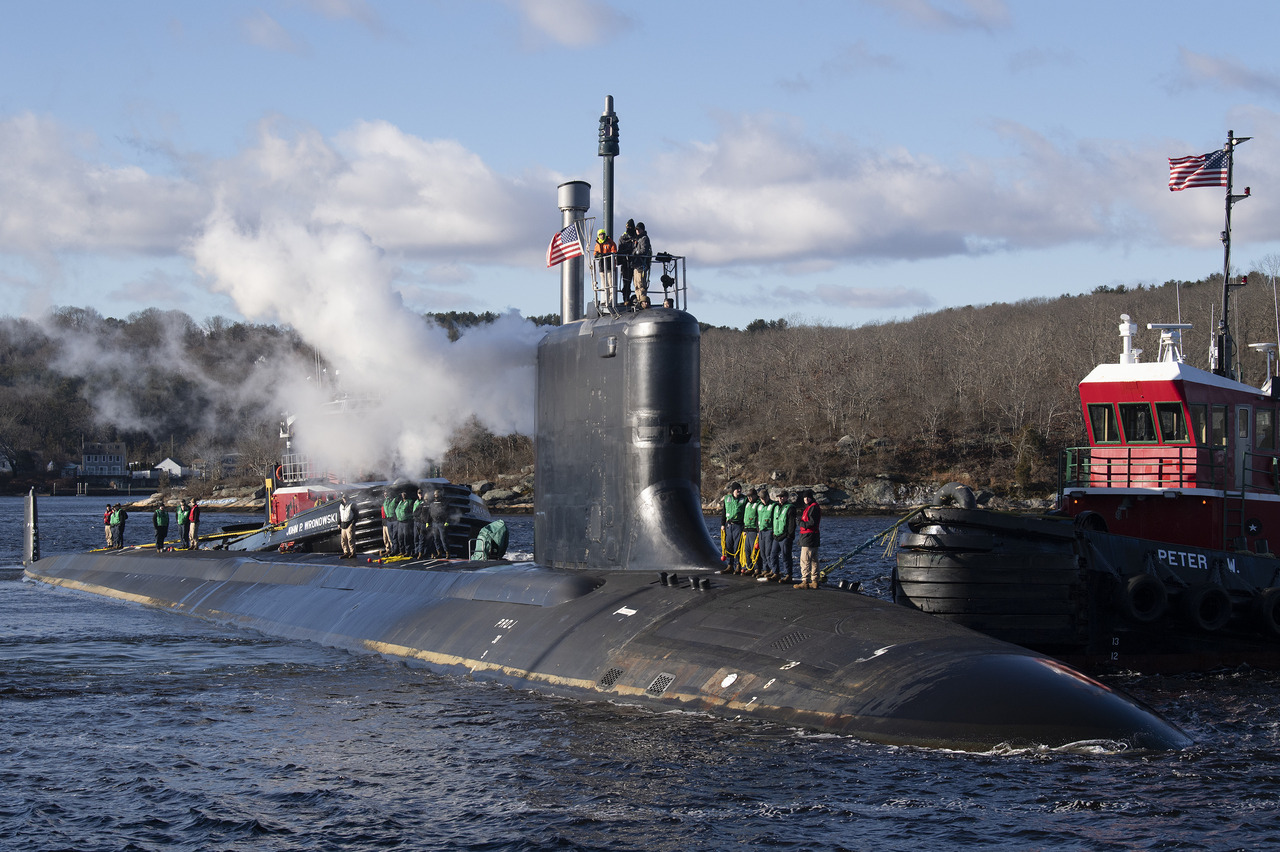
The Latest USS Iowa Is Almost Ready for Action
In a further sign that none of the Iowa-class battleships will ever return to service, the latest U.S. Navy vessel named for the Hawkeye State was officially commissioned into service at a ceremony on April 5 at Naval Submarine Base New London, Conn.
USS Iowa is the 24th Virginia-class fast-attack submarine and was built as part of a “team effort” with General Dynamics Electric Boat and Huntington Ingalls Industries Newport News Shipbuilding, each producing “certain portions” of the vessel. The commissioning comes nearly six years after the keel for the nuclear-powered sub was laid down at the GDEB facility in Groton, Conn.
Construction continued throughout the pandemic.
“We did not miss a day during COVID, a testament to our shipbuilders. We endured a graving dock pontoon break and many other hardships during that period,” proudly stated Electric Boat President Mark Rayha.
“It is an honor to commission the Navy’s newest nuclear-powered attack submarine here at Groton, the submarine capital of the world,” added Secretary of the Navy John Phelan.
“USS Iowa will make our fleet stronger and more lethal. As Iowa goes to sea, she does so with one mission: to ensure that America’s adversaries never doubt our resolve.”
Midway Point for the Virginia-Class Block IV
The commissioning of the USS Iowa follows that of another Virginia submarine that shared its name with an Iowa-class battleship last September when USS New Jersey joined the fleet at Naval Weapons Station Earle in Middletown Township, New Jersey.
The Block IV boats incorporate design changes focused on reducing total ownership costs. By making these smaller-scale design changes to increase the component-level lifecycle of the submarine, the U.S. Navy was able to increase the periodicity between depot maintenance availabilities and the number of deployments.
The main improvement of Block IV over the preceding Block III is the reduction of significant maintenance periods from four to three, increasing each boat’s total lifetime deployments by one.
Each displaces 7,835 tons and has a hull length of 377 feet and a diameter of thirty-four feet. The submarines attain speeds of twenty-five knots with the power from the onboard nuclear reactor. Each of the Block IV subs can dive to more than 800 feet.
The submarines have Mark 48 advanced capability torpedoes, underwater-launched Harpoon anti-ship missiles, and Tomahawk cruise missiles. All are launched via a dozen vertical launching cells and four torpedo tubs.
With the commissioning of the USS Iowa, the Block IV program has hit its midpoint. After the completion of the final boats of the block, the U.S. Navy will begin to receive Block V, which will incorporate the Virginia Payload Module (VPM), an eighty-four-foot-long, mid-ship section with four large-diameter, vertical launch tubes for keeping and launching more Tomahawks and other payloads.
As previously reported by Brandon J. Weichert for The National Interest, “The VPM allows a Virginia-class Block V to carry an astonishing 40 additional cruise missiles. This capability is seen as a real game-changer for the Navy, especially as they are forced to retire more Ohio-class guided-missile submarines.”
The Newest Iteration of the USS Iowa
The USS Iowa is now the fifth U.S. Navy vessel named for the Hawkeye state.
In addition to BB-61, the prior ships included a Civil War steamboat that was used to ferry troops on the Mississippi; BB-4, a pre-dreadnought battleship that was in service during the Spanish-American War; and BB-53, a South Dakota-class battleship that was laid down after World War I but canceled due to the Washington Naval Treaty, signed in 1922.
While the World War II battleship won’t ever return to service, restoration efforts are being made to preserve its legacy. One such attempt is replacing the teak deck, part of a planned six-year, $10 million project.
About the Author: Peter Suciu
Peter Suciu is a Michigan-based writer. He has contributed to more than four dozen magazines, newspapers, and websites with over 3,200 published pieces over a twenty-year career in journalism. He regularly writes about military hardware, firearms history, cybersecurity, politics, and international affairs. Peter is also a Contributing Writer for Forbes and Clearance Jobs. You can follow him on Twitter: @PeterSuciu. You can email the author: [email protected].
Image: Wikimedia Commons/ U.S. Navy.